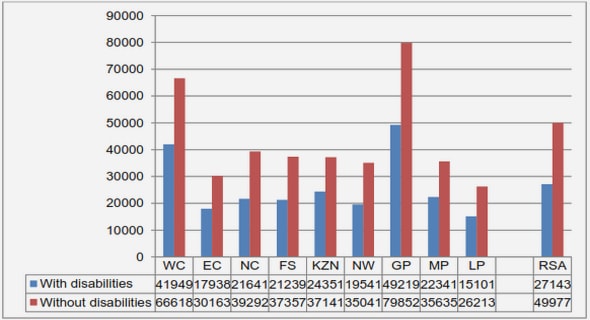(Downloads - 1)
For more info about our services contact : help@bestpfe.com
Table of contents
CHAPTER 1
INTRODUCTION
1.1 Background
1.1.1 Production of aluminum
1.1.2 Production of carbon anodes
1.2 Statement of the problem
1.3 Objectives
1.4 Scope
1.5 Originality
CHAPTER 2
LITERATURE REVIEW
2.1 Raw materials and their impact on anode quality
2.1.1 Petroleum coke
2.1.1.1 Effect of calcination on different coke properties
2.1.1.2 Effect of various calcined coke properties on anode properties
I. Coke porosity and bulk density
II. Coke crystalline length
III. Coke electrical resistivity
IV. Coke air and CO2 reactivity
V. Coke granulometry
2.1.1.3 Anode consumptions
I. Electrolytic consumption
II. Carboxy attack (CO2 reactivity)
III. Air burn (air reactivity)
IV. Selective oxidation (dusting)
V. Effect of the degree of calcination on anode reactivity
VI. Effect of coke sulfur content on anode reactivity
2.1.2 Recycled anode butt
2.1.3 Coal tar pitch
2.2 Wetting Study
2.2.1. Role of petroleum coke in wetting
2.2.1.1 Porosity and bulk density
2.2.1.2 Particle shape factor
2.2.1.3 Coke surface chemistry
2.2.2. Role of coal tar pitch
2.2.2.1 Pitch surface tension
2.2.2.2 Pitch surface chemistry
2.2.2.3 Other factors
2.2.3 Role of recycled anode butt
2.3 Effect of process parameters on the pitch distribution in anode
2.4 Worldwide anode properties
CHAPTER 3
EXPERIMENTAL
3.1 Characterizations of raw materials
3.1.1 Chemical analysis
3.1.1.1 FT-IR analysis
3.1.1.2 XPS analysis
3.1.1.3 Proximate analysis of coke
3.1.2 Physical analysis
3.1.2.1 Wettability
3.1.2.2 Tapped bulk density (ISO 10236)
3.1.2.3 Measurement of porosity
3.1.3 Structural analysis
3.1.3.1 SEM analysis
3.1.3.2 Optical microscope analysis
3.2 Preparation and characterizations of laboratory anodes
3.2.1 State of the art of anode production
3.2.1.1 Dry aggregate preparation
3.2.1.2 Mixing
3.2.1.3 Forming
3.2.1.4 Baking
3.2.2 Characterizations of anodes and anode samples
3.2.2.1 Sample preparation
3.2.2.2 Apparent density of anode (UQAC)
3.2.2.3 Apparent density of anode sample [ASTM 5502-00 (2005)]
3.2.2.4 Electrical resistivity of anode (UQAC)
3.2.2.5 Electrical resistivity of anode sample [ASTM D6120-97(2007)]
3.2.2.6 Determination of air (ASTM D6559-00a) and CO2 (ASTM D6558-00a)
reactivities
3.2.2.7 Uniaxial compressive strength of anode samples [C695-91 (2005)]
3.2.2.8 Flexural strength of anode samples (ISO CD 12986)
3.2.2.9 Sulfur analysis of anode
3.3 Characterizations of industrial anodes
3.3.1 Paste analysis
3.3.2 Pitch and pore analysis in green and baked anodes
3.3.3 Measurement of the crystalline length of baked anode samples by XRD
(ASTM D-5187)
3.4 Statistical analysis
3.4.1 Linear multivariable analysis
3.4.2 Artificial neural network analysis (ANN)
3.4.3 Analysis of variance (ANOVA)
CHAPTER 4
WETTABILITY
4.1. Wettability of petroleum coke from different suppliers by coal tar pitch
4.1.1 General
4.1.2 Materials
4.1.3 Contact angle test
4.1.4 Structural analysis
4.1.5 Chemical analysis
4.1.6 Analysis of coke-pitch interface
4.1.7 Concluding remarks
4.2 Effect of coke crystallinity on the wettability of cokes by pitch
4.2.1 General
4.2.2 Materials
4.2.3 Contact angle test.
4.2.4 Structural analysis
4.2.5 Chemical analysis
4.2.6 Analysis of coke-pitch interface
4.2.7 Concluding remarks
4.3 Wetting characteristic of recycled anode butts
4.3.1 General
4.3.2 Materials
4.3.3 Contact angle test
4.3.4 Structural analysis
4.3.5 Chemical analysis
4.3.6 Analysis of coke-pitch and butt-pitch interfaces
4.3.7 Concluding remarks
4.4 Utilization of different statistical tools to analyze and predict the influence of raw
material composition and impurities on contact angle
4.4.1 General
4.4.2 Materials
4.4.3 Linear multivariable analysis
4.4.3.1 Contact angle at 80 s
4.4.3.2 Contact angle at 1500 s
4.4.3.3 Validation of contact angle predictions
4.4.4 Artificial neural network
4.4.4.1 Contact angle at 80s
4.4.4.2 Contact angle at 1500 s
4.4.4.3 Validation of contact angle predictions
4.4.5 Concluding remarks
CHAPTER 5
PRODUCTION OF LABORATORY ANODES AND THEIR CHARACTERIZATION
5.1 Improvement of anode recipe
5.1.1 General
5.1.2 Materials
5.1.3 Development of ANN model
5.1.4 Characterizations of anodes
5.1.4.1 Green and baked density of anodes
5.1.4.2 Electrical resistivity of green and baked anodes
5.1.4.3 Air reactivity
5.1.4.4 CO2 reactivity
5.1.4.5 Uniaxial compressive strength
5.1.4.6 Flexural strength (Bending)
5.1.5 Concluding remarks
5.2 Influence of coke crystallinity and sulfur content on anode reactivity
5.2.1 General
5.2.2 Materials
5.2.3 Effect of coke crystallinity and baking temperatures on anode properties
5.2.4 Combined effect of coke crystallinity, sulfur content and baking temperatures
on anode reactivity
5.2.5 Concluding remarks
5.3 Effect of green anode cooling times on pitch redistribution in anodes
5.3.1 General
5.3.2 Materials and methodology
5.3.3 Image analysis of anode sections
5.3.4 Concluding remarks
CHAPTER 6
CHARACTERIZATIONS OF INDUSTRIAL ANODES
6.1 Pitch distribution in industrial anodes
6.1.1 General
6.1.2 Materials and methods
6.1.3 Image analysis by optical microscope
6.1.4 Image analysis by digital camera
6.1.4.1 Effect of different vibrocompactors and compaction times on pitch
distribution of green anodes
6.1.4.2 Effect of different vibrocompactors and compaction times on
distribution of pitch on baked anode
6.1.5 Concluding remarks
6.2 Effect of different factors on industrial anode CO2 reactivity
6.2.1 General
6.2.2 Materials
6.2.3 Development of the ANN Model
6.2.4 Concluding remarks
6.3 Analysis of industrial anode paste
6.3.1 General
6.3.2 Materials
6.3.3 Calculation of kneader residence time
6.3.4 Performances of industrial kneaders
6.3.5 Concluding remarks
CHAPTER 7
CONCLUSION


